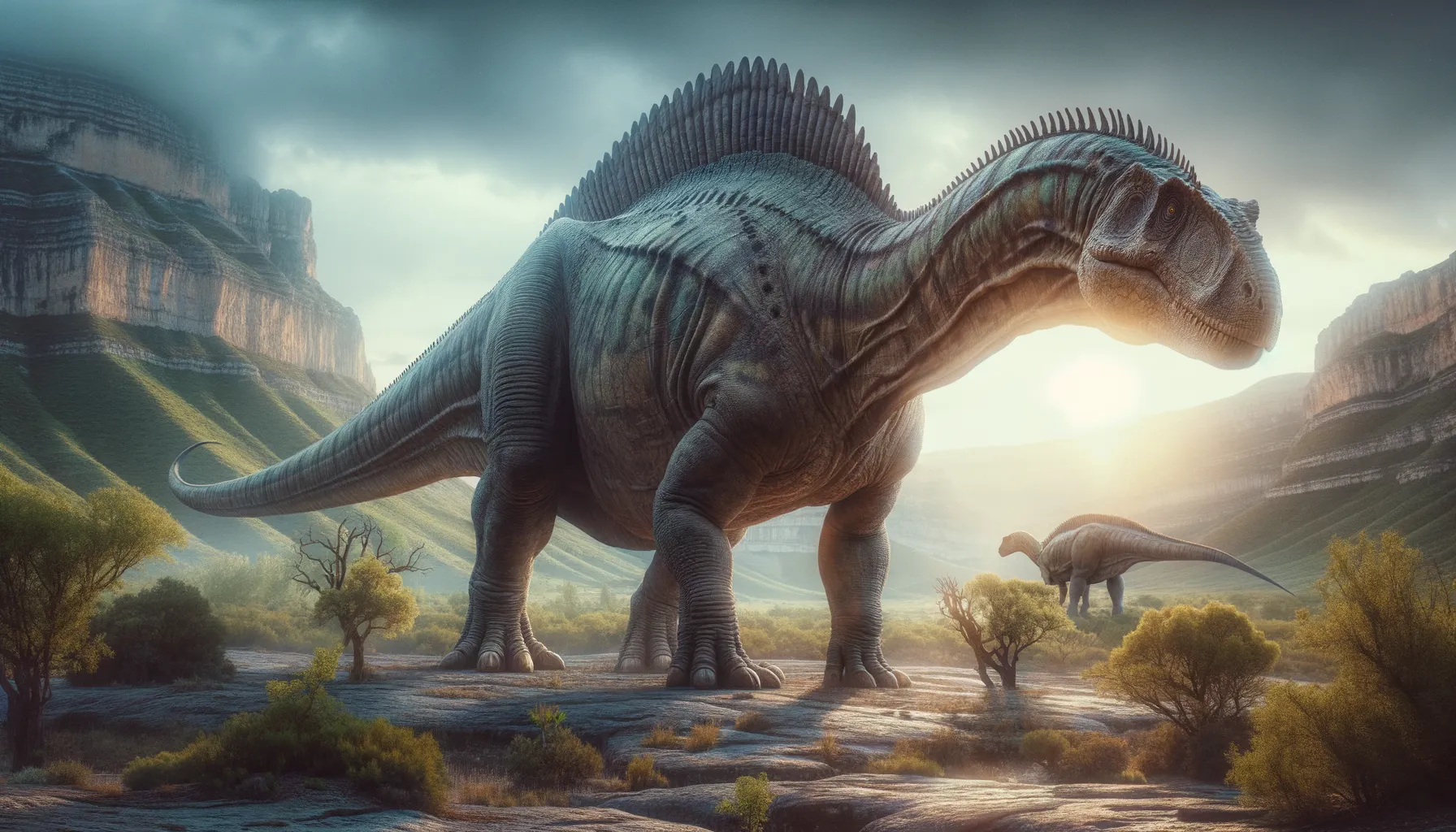
Lohuecotitan
The giant of ancient Spanish landscapes.
Period
Cretaceous
Length
Measured about 20 meters in length.
Height
Estimated to reach around 10 meters tall.
Weight
Weighed approximately 20 to 30 tons.
Lohuecotitan was a giant sauropod dinosaur that lived during the Late Cretaceous period. Known for its colossal size, it roamed the land that is now modern-day Spain. Its fossils provide significant insight into the diversity and distribution of European dinosaurs during this period. As a herbivore, it would have consumed a vast amount of vegetation to sustain its massive body, likely towering over many other species of its time.
Diet
Lohuecotitan was a herbivore, feeding predominantly on the abundant vegetation of the Cretaceous period. It likely used its long neck to reach leaves and soft plants, which it required in large quantities to maintain its massive body. This diet helped shape the vegetation of its environment as it moved through different feeding grounds.
Hunting
Being a herbivore, Lohuecotitan did not hunt other dinosaurs. Instead, it foraged for plants and relied on the dense foliage of Cretaceous forests. It likely moved slowly from one feeding area to another, ensuring a continuous supply of plant matter.
Environmental challenges
Lohuecotitan faced the challenge of finding sufficient food to support its large size, especially during dry spells. It also had to navigate the dangers posed by predators, although its size was a natural deterrent. Additionally, changes in climate or habitat would have required adaptability, impacting its migration patterns and access to resources.
Speed
Likely slow due to its massive size.
Lifespan
Estimated to live for several decades.
First discovery
Discovered in Spain in 2006 by an international team.
Fun Facts
- Lohuecotitan was a giant sauropod dinosaur that lived around 72 million years ago during the Late Cretaceous period.
- This massive dinosaur is named after the site of its discovery, the Lo Hueco fossil site in Spain.
- Lohuecotitan is known for its long neck and tail, features that helped it reach high and low vegetation for feeding.
- Despite its large size, Lohuecotitan is estimated to have been relatively lightweight compared to some other sauropods, due to its hollow bones.
- The discovery of Lohuecotitan has provided valuable insights into the diversity of sauropods in Europe during the Late Cretaceous.
- Its fossils were found alongside those of other prehistoric creatures, suggesting it lived in a vibrant ecosystem with diverse species.
Growth and Development
Lohuecotitan likely experienced rapid growth during its early years to reach its adult size quickly. This rapid development was crucial for survival, as larger size provided better protection against predators. As it matured, growth would slow, with resources focused on sustaining its large body and reproductive capacity.
Habitat
Lohuecotitan inhabited lush environments, possibly open woodlands or floodplains that provided ample foliage. This habitat supplied the necessary resources for its survival, including water bodies that eased nutrient transport. Seasonal changes in these habitats might have triggered migrations in search of food and optimal conditions.
Interaction with other species
While Lohuecotitan primarily interacted with plant species as part of its diet, it also shared its environment with other dinosaurs. Its immense size likely provided protection from many predators, though it might have coexisted with or evaded larger carnivorous dinosaurs. Competition for resources with other herbivores was possible, influencing its foraging habits.
Natural lifespan
Lohuecotitan possibly lived for 70 to 80 years.
Reproduction
Lohuecotitan probably laid eggs, as evidenced by related dinosaur species. Nesting sites would have been chosen carefully to ensure safety from predators and environmental conditions. Hatchlings would be relatively independent, although they grew rapidly to reach sizes offering more protection.
Social behaviour
Lohuecotitan might have formed herds for increased protection against predators. Herd behavior could also facilitate finding resources, as moving in groups helped identify rich feeding grounds. This social structure would allow for collective raising of young, enhancing survival rates through shared vigilance.
Fossil locations
Fossils of Lohuecotitan have predominantly been found in Spain, particularly within the Lo Hueco site in Cuenca. This discovery site has yielded significant fossils that offer valuable insights into the Late Cretaceous period in Europe. The concentration of fossils here suggests that the area was a habitat well-suited for these colossal dinosaurs.
